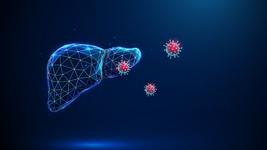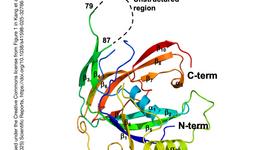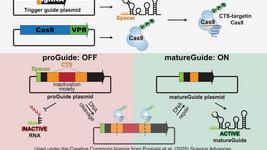CMN Weekly (9 May 2025) - Your Weekly CRISPR Medicine News
Top picks
Researchers led by Dr. Emil Lou at University of Minnesota have completed the first-in-human trial using CRISPR/Cas9 to target CISH, a novel intracellular immune checkpoint. The Phase 1 study, sponsored by Intima Bioscience, successfully manufactured CISH-knockout TILs for 86% of the enrolled metastatic gastrointestinal cancer patients. Following lymphodepletion and IL-2 administration, 50% of the trial participants showed stable disease at 28 days, with one microsatellite-instability-high colorectal cancer patient achieving complete, durable remission that exceeded 21 months despite prior anti-PD1/CTLA-4 failure. While all patients experienced expected adverse events from preparative regimens, there were no reports of severe cytokine release syndrome. This landmark trial provides first evidence that CRISPR-mediated targeting of intracellular checkpoints can deliver therapeutic efficacy against immunotherapy-refractory solid tumours. The findings were published recently in The Lancet Oncology.
Research
- Researchers have identified a secreted protein that acts as a crucial brake on skin stem cell proliferation, offering new insights into maintaining epidermal balance. Using a comprehensive secretome analysis coupled with an innovative CRISPR screening approach, scientists at University of California Irvine have discovered that Secreted Frizzled-Related Protein-1 (SFRP1) restrains epidermal progenitor cell multiplication by inhibiting Wnt signalling and blocking ectopic expression of leukaemia inhibitory factor (LIF). The findings were recently published in Cell Death and Diseases and summarised by CRISPR Medicine News here.
- In an article published in Stem Cell Research & Therapy, researchers in Belgium report that TXNIP, a key regulator of oxidative and endoplasmic reticulum stress with established roles in diabetes, cardiovascular disease, cancer, and inflammation, does not enhance the functional differentiation of stem cell-derived hepatocytes or islets when knocked out. Instead, its absence alters stress responses without conferring metabolic benefits. Given TXNIP’s established involvement in diseases such as diabetes, neurodegeneration, and cancer via modulation of redox balance, apoptosis, and inflammation, these findings suggest that while TXNIP influences stress signalling, its absence does not enhance metabolic functionality in differentiated somatic cells. This work presents CRISPR-engineered TXNIP⁻/⁻ and TXNIP⁺/⁺ stem cell models for future disease mechanism studies.
- Feng Zhang and colleagues report this week in an article published in Nature Biotechnology that the engineering of a compact RNA-guided nuclease, NovaIscB, derived from the OMEGA system, enables efficient and specific epigenome editing in mammalian cells. Through evolution-guided protein design and structural RNA optimisation, NovaIscB supports in vivo applications via single-vector delivery.
- In an article published yesterday in ACS Sensors, scientists in China report an integrated biosensing platform for the rapid and sensitive detection of Salmonella in large-volume food samples. The platform integrates a Rotifer-Mimicking Magnetic Separator with a colorimetric biosensor using Recombinase Aided Amplification, betaine, and CRISPR-Cas12a in a one-pot system. The process captures Salmonella with modified magnetic beads, isolates these complexes, activates ribonucleoprotein complexes with target DNA, and releases particles that catalyse a reaction that yields a visible blue colour that indicates Salmonella concentration. The system successfully detects Salmonella in milk samples within 75 minutes with a detection limit of 89 CFU/mL, providing a simple, sensitive, and low-cost method for on-site food safety monitoring.
- A team in Korea has developed a novel tool for off-target detection called "Variant-aware Cas-OFFinder". The pipeline is based on Cas-OFFinder and works by accounting for individual genetic variants. The team benchmarked the pipeline's improved scalability and performance with the human genome and pepper cultivars, having unique potential off-target sites on each allele at the haplotype level. Variant-aware Cas-OFFinder is open to all users without a login requirement and is freely available online at https://rgetoolkit.com/var-cas-offinder. The findings were published yesterday in Nucleic Acids Research.
- A researcher in Denmark has developed the Array Assembler, a user-friendly tool that addresses the critical bottleneck in designing larger multitargeting CRISPR RNA arrays required for simultaneous gene knockout, activation, or repression. As newer CRISPR variants enable targeting multiple genes and mRNA simultaneously, designing the necessary longer crRNA arrays becomes increasingly time-consuming and error-prone. This tool efficiently processes input crRNA spacer sequences into the oligonucleotides required for array assembly, enabling rapid and reliable design from user-defined spacer sequences and proving valuable for laboratories conducting genomic perturbations. The findings were published in ACS Synthetic Biology earlier this week.
- Research published this week in Angewandte Chemie by scientists in China and Israel introduces LAC12aGE, a photo-triggered CRISPR/Cas12a system that uses light-activated crRNA for precise gene editing. The researchers demonstrated its effectiveness by targeting the hepatocyte growth factor gene in HepG2 cells, which led to inhibition of cell proliferation and enhanced apoptosis. When applied to tumours in vivo, the system effectively suppressed tumour growth and increased tumour tissue death, showing promising potential for light-controlled genomic editing and cancer treatment.
Quarter 1 (Q1) 2025 financial results and business updates
- Intellia Therapeutics announced Q1 2025 financial results and highlighted recent company progress in a press release published yesterday. Among the main points are that the company reported being on track to complete enrolment of the global Phase 3 HAELO study in hereditary angioedema in the third quarter of 2025, and that it has dosed the first patient in the global Phase 3 MAGNITUDE-2 trial of nexiguran ziclumeran in patients with hereditary ATTR amyloidosis with polyneuropathy. Enrolment in the global Phase 3 MAGNITUDE trial of nex-z in patients with ATTR with cardiomyopathy continues. The company reports ending the first quarter with approximately $707.1 million in cash, cash equivalents and marketable securities, which is expected to fund operations into the first half of 2027. See the press release for further details.
- ProQR Therapeutics announced Q1 2025 operating and financial results yesterday. Among the highlights were that its Axiomer™ ADAR-mediated RNA editing pipeline is advancing across liver and CNS programmes, with clinical trial application filing on track for Q2 of this year for its lead programme AX-0810 targeting the NTCP protein for cholestatic diseases. The company reported €132.4 million in cash and cash equivalents as of end Q1, providing runway into mid-2027, plus additional potential milestones from its partnership with Eli Lilly. See the press release for further details.
- Earlier this week, 2seventy bio reported Q1 2025 financial results and shared an update on its proposed acquisition by Bristol Myers Squibb. According to the press release, the acquisition by Bristol Myers Squibb is on track to close in the second quarter of 2025. The company reported ending the quarter with approximately $173 million in cash, cash equivalents, and marketable securities.
- CRISPR Therapeutics provided Q1 2025 financial results and a business update that included positive top-line data from the ongoing Phase 1 clinical trial of CTX310™ targeting ANGPTL3. According to the press release, initial CTX310™ Phase 1 data demonstrates dose-dependent decreases in triglycerides (TG) and low-density lipoprotein (LDL), with peak reduction of up to 82% in TG and up to 81% in LDL, with a well-tolerated safety profile. The company expects to present data at a medical meeting in the second half of 2025. The company's pipeline includes 4 other clinical-stage programmes within immunooncology and autoimmune disease, type 1 diabetes and cardiovascular disease, as well as 10 preclinical programmes across diverse therapeutic areas. As of March 31st, 2025, the company reports approximately $1.86 billion in cash, cash equivalents, and marketable securities.
- Vertex Pharmaceuticals reported consolidated financial results for the first quarter as of March 31, 2025, and raised the low end of its total revenue guidance range by $100 million, from $11.75 billion to $12 billion to a new range of $11.85 billion to $12 billion. See the press release for further details.
- Earlier this week, Iovance Biotherapeutics reported Q1 2025 revenue of $49.3 million, revising its annual guidance to $250-300 million. Since launching Amtagvi, the first FDA-approved T cell therapy for solid tumours, the company has treated more than 275 patients and generated $210+ million in revenue. Regulatory approvals in the UK, EU, and Canada are expected this year. The company also reported that its manufacturing capacity is expanding from 1,300 to 5,000 patients annually, while its next-generation gene-edited TIL therapies using TALEN® technology advance through clinical trials. With $366 million in cash, Iovance has runway into the second half of 2026. See the press release for further details.
- Caribou Biosciences reported Q1 2025 financial results yesterday. Among the highlights were plans to disclose clinical datasets in H2 2025 from its lead CAR-T programmes: CB-010 for large B cell lymphoma and CB-011 for multiple myeloma. The company recently implemented strategic pipeline prioritisation, discontinuing its lupus and acute myeloid leukaemia programmes while reducing workforce by 32%. Caribou reported $212.5 million in cash as of end Q1, providing runway into H2 2027. For further details, see the press release here.
- Korro Bio shared its Q1 2025 financial report yesterday. In the press release, the company notes that it remains on track for an interim readout from its Phase 1/2a REWRITE clinical trial of KRRO-110 for Alpha-1 antitrypsin deficiency in H2 2025. The company is streamlining operations with a workforce reduction of approximately 20% to extend cash runway into 2027. The company reported $139.0 million in cash as of end Q1.
Industry
- According to a press release published on its website, Synthego is entering into a purchase agreement with Perceptive Advisors to acquire all Synthego's assets on a going-concern basis. To facilitate the sale, Synthego has voluntarily initiated a Chapter 11 proceeding in the United States Bankruptcy Court of the District of Delaware. Along with the Asset Purchase Agreement and bankruptcy petition, Synthego filed papers seeking court approval of up to $12.5 million in Debtor-in-Possession financing from Perceptive to support continued operations and the restructuring process. The sale is expected to close in 70 days.
- Repare Therapeutics announced recently that it has out-licensed its CRISPR-enabled discovery platforms to DCx Biotherapeutics, a Canadian company developing precision drug conjugates. The deal includes Repare's clinically-validated SNIPRx platform, which uses synthetic lethality approaches along with its SNIPRx-surf and STEP2 platforms. The STEP2 platform leverages CRISPR-enabled genetic screens with small molecule inhibitors to identify clinically-relevant genetic targets. Under the terms of the agreement, DCx will integrate these CRISPR-based high-throughput functional screening capabilities into its MuSic™ platform to develop immune-stimulatory precision therapeutics for genetically-defined cancers. Repare will maintain an economic interest while focusing on its clinical-stage pipeline. See the full press release here.
- Vor Bio announced yesterday that it is immediately winding down all clinical and manufacturing operations, including ongoing clinical trials, although no safety concerns were cited with its product candidates. The company reported that it is exploring strategic alternatives to maximise shareholder value amid a challenging fundraising environment. Options include potential asset sales, licensing deals, company sale, or other business combinations. Vor Bio has implemented a 95% workforce reduction at a cost of approximately $10.9 million, retaining just 8 employees to manage the strategic process and regulatory compliance. The company has not established a timeline for this process and will not provide further updates until specific actions are approved or required by law. See the press release for further details.
CASGEVY patent dispute
- Together with Potter Clarkson, Korean company ToolGen has filed an infringement suit against Vertex's CASGEVY therapy in the UK. However, Vertex and Freshfields pre-empted this with a nullity suit against ToolGen's patent in the Netherlands. The two lawsuits mark the latest chapter in a battle over the first approved CRISPR therapy, which began years ago at the European Patent Office. Read more about this here.
Reviews
The Case for Germline Gene Correction: State of the Science. This review by researchers at Oregon Health & Science University examines germline gene editing in reproductive cells, primarily focused on correcting genetic mutations linked to inherited diseases. While CRISPR-Cas9 advances may have the potential to prevent genetic diseases before birth and in future generations, they also raise safety and ethical concerns. The authors emphasise that translating human heritable genome editing requires integrating scientific validation, ethical oversight, regulatory frameworks, and public engagement.
News from CRISPR Medicine News
- On Wednesday, we published breaking news from scientists at St. Jude Children's Research Hospital in the United States. Their study, using CRISPR activation in a cortical organoid model, offers promise for treating a rare genetic epileptic disorder known as UBA5-associated encephalopathy. The novel approach boosts the expression of functional UBA5 gene variants to restore cellular function, potentially alleviating debilitating neurological symptoms in affected children. The study was published in Science Translational Medicine. Read our interview with senior author Heather Mefford here.
To get more CRISPR Medicine News delivered to your inbox, sign up to the free weekly CMN Newsletter here.
Tags
ArticleMissing linksNewsCMN Weekly2seventybioBristol Myers SquibbCaribou Biosciences, Inc.CRISPR Therapeutics AGEli LillyEnsomaIntellia Therapeutics, Inc.Intima Bioscience, Inc.Iovance BiotherapeuticsKorro BioProQR TherapeuticsRepare TherapeuticsSynthegoToolGenVertex Pharmaceuticals, Inc.Vor BiopharmaYolTech Therapeutics
CLINICAL TRIALS
Sponsors:
Base Therapeutics (Shanghai) Co., Ltd.
Sponsors:
Base Therapeutics (Shanghai) Co., Ltd.







